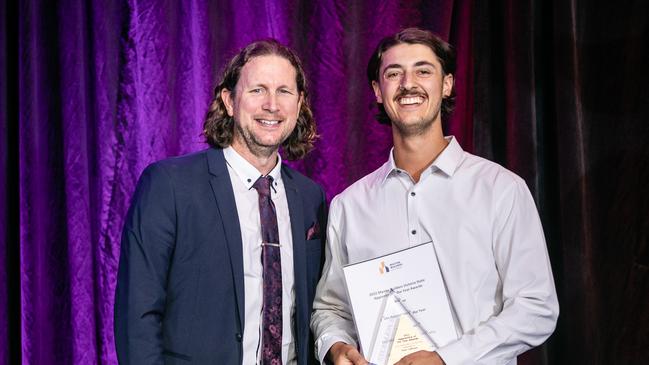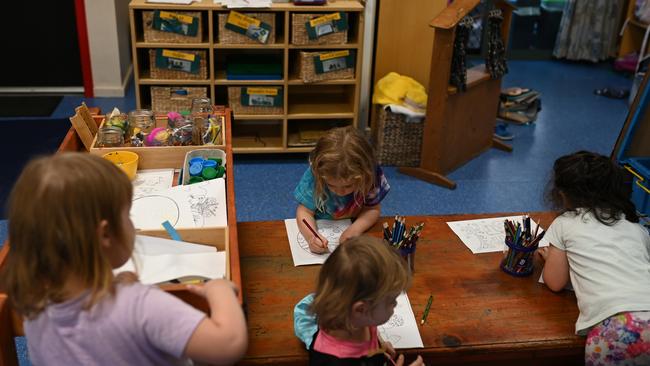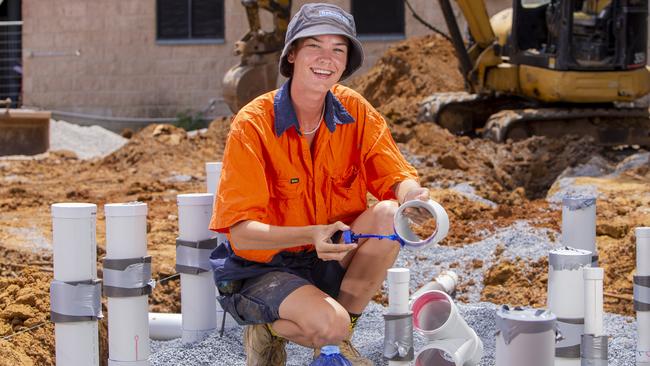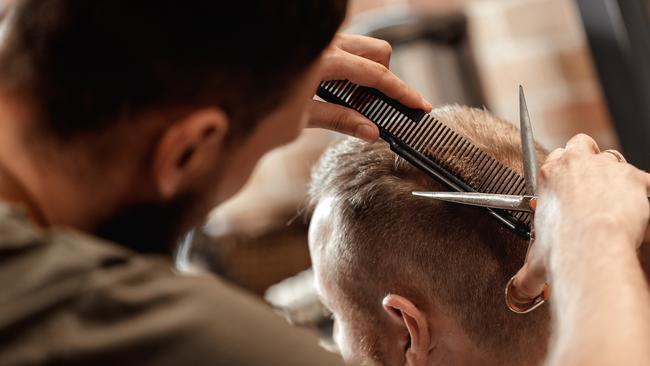‘Secure jobs’: Why you should consider becoming a tradie rather than going to uni
Victorian school leavers should weigh up the benefits of learning a trade over costly university education, experts say. Check out what you can earn here.
Leader
Don't miss out on the headlines from Leader . Followed categories will be added to My News.
School-leavers are being encouraged to consider choosing a trade apprenticeship over university education as investment in the sector and vital skill shortages create “secure, quality” jobs.
Premier Daniel Andrews recently spruiked the advantages of a VET qualification as he announced a $103 million investment in the sector, saying Victorians no longer needed to invest in university courses.
“When they’re thinking about their future, they don’t have to go to university. If they want to, fine, but they don’t have to,” he said.
“This is about sending the clearest possible message to every young person, to every parent, that this pathway is equal to a university pathway. It leads to just as good jobs, arguably more secure jobs, more certain employment pathways.”
National Centre for Vocational Education Research statistics show 94 per cent of trade apprentices and trainees were employed after finishing their training in 2021, compared to 68.9 per cent of university graduates.
They’re also happier with their training, with more than 86 per cent of trade completers and 91 per cent of non-trade VET completers satisfied with their education, compared to 68.4 per cent of undergraduates.
Aside from higher employment prospects, National Skills Week chair, Brian Wexham said one of the advantages of VET training was the cost.
“An apprentice carpenter, for instance, would have earned around $120,000 at the completion of a four-year apprenticeship, as opposed to the average university student who completes a degree with little or no practical work experience and with up to a $30,000 or higher HECS debt,” he said.
Mr Wexham says apprenticeships and traineeships in particular are a smart choice as participants are paid to learn and they gain both technical and non-technical skills.

Carpenter Taye Cahoon, 22, who was recently recognised as the Master Builders of Victoria’s apprentice of the year, says apprenticeships are an “incredible” pathway to learn life skills and get hands-on experience.
“I was lucky enough to fall into an apprenticeship after finishing year 12 and I haven’t looked back,” he said.
“It’s an amazing pathway and if people are considering it or unsure of what they want to do I’d just say go for it, give it a try.”
Mr Chaoon completed his apprenticeship in November last year and now plans on getting his builders’ licence.
Skill shortages in Victoria’s economy have led to the expansion of free TAFE and JobTrainer courses which now offer more than 60 government-subsidised training courses for high-priority jobs.
Since the program was introduced in 2019, more than 87,000 students had enrolled in a course saving a combined $204 million in tuition.
The most recent Skills Priority List produced by the Federal Government in June 2021 lists 134 jobs that have a strong or moderate future demand and current worker shortage in Victoria.
Of these, more than 80 jobs require VET training including nursing, childcare, welders, electricians, plumbers, carpenters and hairdressers.
So which are the best vocational jobs to choose?

Nursing
Over the next decade, one in four new jobs are expected to be in health-related industries as Australia grapples with an ageing population.
Enrolled nurses require a Diploma of Nursing, which typically comprises 18 to 24 months of study and 400 clinical placement hours, to provide care to patients in hospitals, aged care and in the community.
Full-time workers can expect to earn around $1426 per week, while earnings tend to be lower when starting out and higher as experience grows.
Only 46 per cent of enrolled nurses work full time with the average full time nurse working 42 hours a week.
An added advantage of the pathway is its inclusion in the Free TAFE for Priority Courses initiative which, if eligible, would cover tuition costs for students.

Child care
There are about 33,800 Victorian’s currently employed as child carers in various roles, with the industry expecting strong growth in the profession over the next five years.
Demand for childcare is on the rise in Australia, with population forecasts estimating there will be 2.2 million children aged under 5 years in Australia by 2031 up from 1.4 million in 2016.
Child carers work to provide care and supervision for children in centres and residential homes, with the average worker earning $953 a week for working about 41 hours.
Only 47 per cent of child carers are working full time, showing the strong potential for part-time employment.
Child carers usually need a certificate III in early childhood education and care, a course often undertaken through a 12 month traineeship.
If eligible, tuition fees may be covered under the Free TAFE for Priority Courses initiative.

Welding and metal trades
The government’s Skills Priority List includes sheet metal trades workers, metal fabricators, welders (first class) and pressure welders, saying the field has a current worker shortage and strong growth expected.
All typically require a Certificate III in Engineering (Fabrication Trade), gained alongside an four-year apprenticeship.
An in-demand career with excellent job prospects given the record investment in infrastructure across Victoria. Welders (also known as Fitter-Welders) cut, shape and combine materials to make different parts for a variety of industries.
The vast majority (91 per cent) of welders work full time, taking home an average of $1541 a week for 46 hours.

Electricians
There are about 33,600 electricians employed in Victoria with the Australian Government’s job outlook expecting strong growth in the profession over the next five years.
Electricians are tradespeople who plan, install and maintain electrical wiring systems across a wide variety of environments, including homes, commercial buildings or industrial machinery.
With significant investment of $60 billion in Victorian infrastructure, demand for tradespeople including electricians is expected to boom.
The vast majority of electricians (90 per cent) are employed full-time, with the average worker earning $1823 per week working approximately 45 hours.
To obtain an electrician’s licence, a student will have to complete a four-year apprenticeship, alongside a Certificate III in electrotechnology.

Plumbers
There’s strong demand for plumbers in Victoria with 19,400 people already employed in the profession.
Plumbers install and maintain pipe in homes, businesses and construction projects for water access and drainage.
Plumbers must complete a four month pre-apprenticeship course before embarking on a four year apprenticeship to obtain their certificate II in plumbing.
More than 85 per cent of plumbers are employed full-time, with the average plumber earning $1894 per week for about 46 hours.

Carpenters
About 33,600 carpenters are employed in Victoria with the Australian Government’s job outlook expecting strong growth in the profession over the next five years.
A carpenter, known colloquially as a chippy, is a tradesperson specialising in working with timber for a variety of construction projects.
The majority of carpenters (87 per cent) work full-time with the average carpenter taking home $1358 a week working approximately 44 hours.
It’s possible to work as a carpenter without formal qualifications however employers typically require a certificate III in carpentry alongside a four year apprenticeship.

Hairdressers
There‘s strong demand for hairdressers in Victoria with about 15,800 hairdressers and barbers currently employed.
Hairdressers generally work in salons where they cut, style and dye clients‘ hair.
The number of people employed as hairdressers fell over the past few years but is expected to rebound by 2025 with moderate growth.
To become a qualified hairdresser, employees need to have a certificate III in hairdressing or have completed an apprenticeship which usually takes three to four years.
Just over half of hairdressers are employed full time, with the average full-time employee earning average about $1025 a week and working approximately 41 hours.





